Team Experience is revisiting 1981 this week inbetween your regular programming...
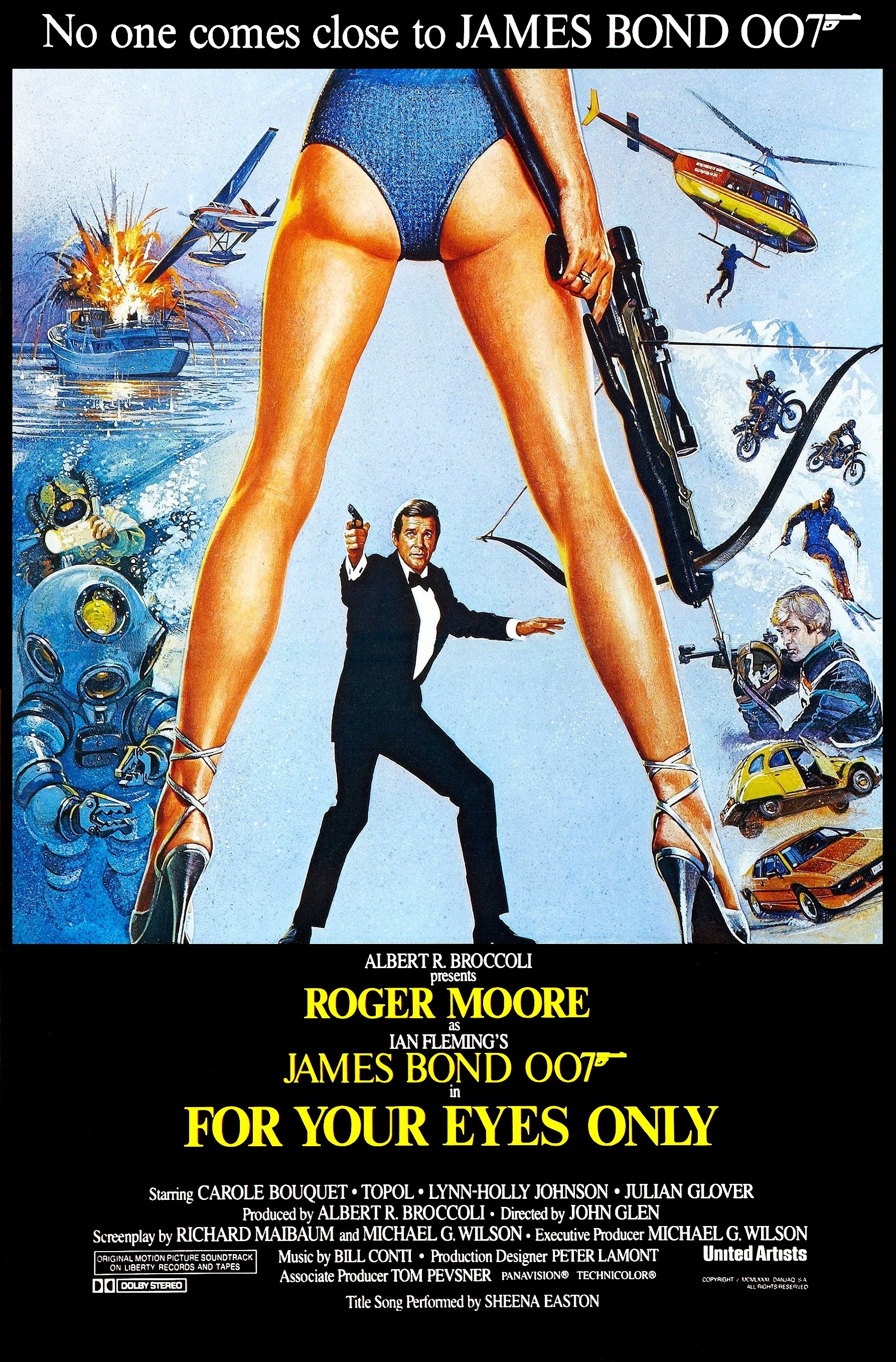

by Deborah Lipp
For Your Eyes Only (1981) is fairly well-loved among Bond fans; in looking at the 24 official movies plus Never Say Never Again, it ranks a bit above middle-of-the-pack. I slice my data on a few different metrics to get an accurate picture (but that’s a story for another day). The 12th Bond film is often thought of as Roger Moore’s best outing (I prefer The Spy Who Loved Me) and it's certainly his most serious.
My love for James Bond, and Bond movies, is unwavering, but each time I revisit them, I see them with new eyes. I’ve seen 1981’s For Your Eyes Only many times, but watching it in 2020 is necessarily different from watching it at any other times. After all, we always bring ourselves to our movie-going...
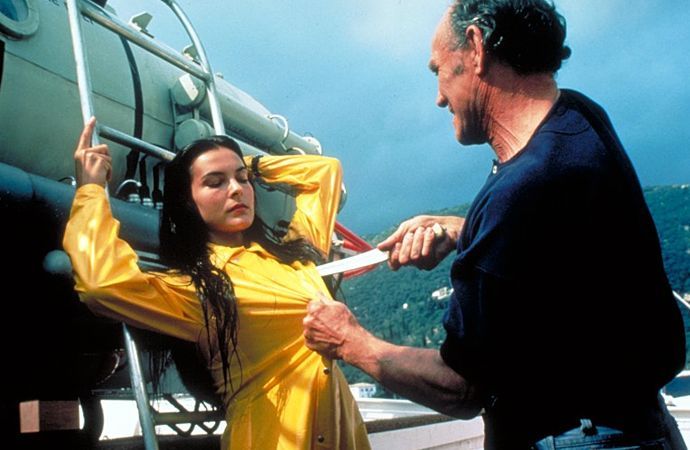
This time, the thing that struck me was the movie’s incredible schizophrenia towards women. Here is a film with three of the strongest, and one of the weakest, female characters in the Bond repertoire. And while these women are each notable and individual, the use of female extras and minor characters also deserves a mention.
MELINA HAVELOCK
Let’s start with this movie’s “Bond Girl,” the woman who is Roger Moore’s co-star: Melina Havelock, played by Carole Bouquet. She’s a terrific character; she has a clear motivation (revenge), a strong core, she’s competent, and she holds her own. She warms to Bond gradually, as he helps her, rather than fall straight into his arms without passing Go.
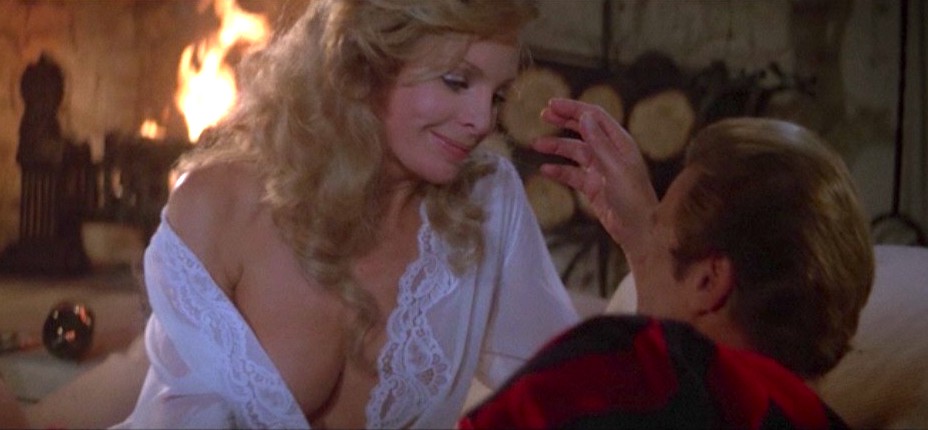
COUNTESS LISL VON SCHLAMM
A secondary “Bond girl,” Countess Lisl von Schlamm (Cassandra Harris), is among my favorite of all Bond characters. In her brief screen time she leaves a singular impression, albeit with an incredibly ugly haircut. A fake Austrian countess (actually from Liverpool) with a fake accent, she seduces Bond to get information and then simply enjoys herself. She and Bond meet on relatively equal footing: Ten years older than Carole Bouquet, she’s more of a match for Bond. When she is killed by the villain it’s genuinely tragic. (Cassandra Harris was visited on-set by her new husband, Pierce Brosnan, who had just begun to appear onscreen in small roles. This was how Cubby Broccoli, the Bond producer, met him and had him in mind to later cast him as James Bond—by which time Harris had, tragically, passed away of cancer.)
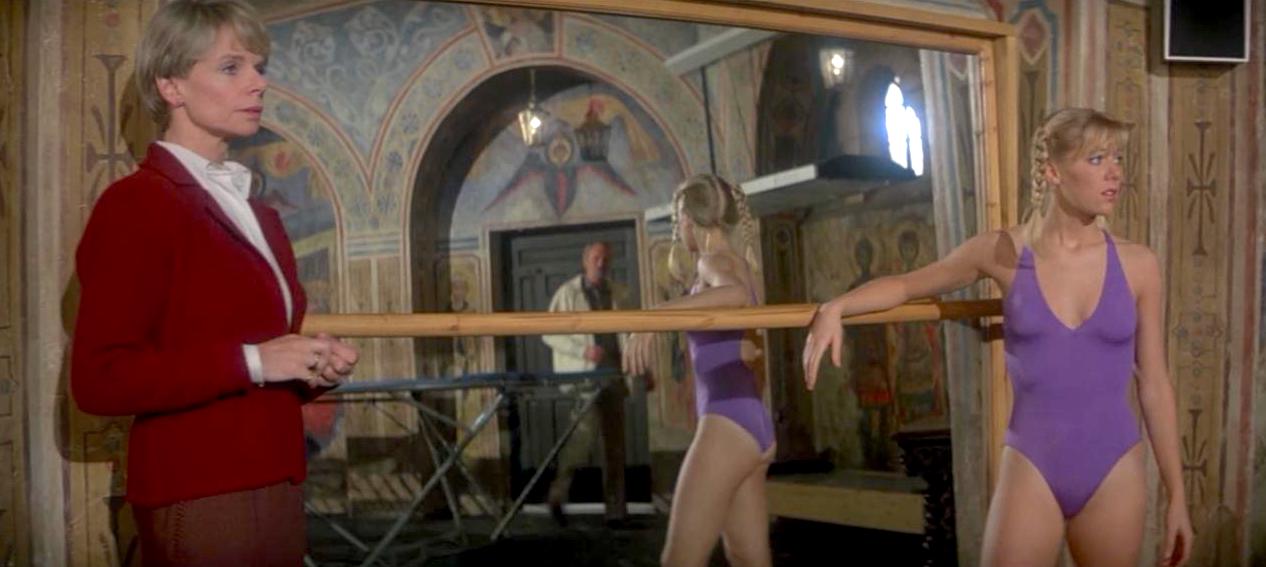 Jacoba & Bibi, coach and student
Jacoba & Bibi, coach and student
JACOBA BRINK
Rounding out the threesome of excellent women, there’s Jacoba Brink (Jill Bennett). A former figure skating star, she is now a skating coach for the next character we’ll consider. She doesn’t have much screen time, or indeed that much to say. What’s special is that she’s there as her own person with her own motives and goals. It’s unusual, in a Bond movie, to cast a woman who isn’t exceptionally beautiful, but who isn’t ugly either. Brink’s character has nothing to do with her looks. She’s there to coach and protect her protégé, and she changes sides in order to do so, because neither Bond’s nor the villain’s goals are her own.
BIBI DAHL
Time for whiplash. The aforementioned skating protégé, Bibi Dahl (Lynn-Holly Johnson) is about as awful as her name. While Bond is busily bedding every woman he encounters, Bibi is portrayed as somehow repulsive for wanting to sleep with men (Bond and a bad guy named Eric). Her sexuality and her aggression are so off-putting that she’s one of the few women James Bond has ever turned down.
I’ve written about women’s ages in Bond movies before. In 1981, Roger Moore was 54, Cassandra Harris was 33, Carole Bouquet was 24, and Lynn-Holly Johnson was 22. None of these women were particularly age-appropriate for Moore. Oddly, Bibi Dahl makes a pass at Bond, then tells the villain, who is eight years younger than Bond, that he’s too old for her. (To be fair, Johnson is portrayed as a teen.)
These four, though, are at least individual women. By and large, what’s remarkable about the women of For Your Eyes Only is their use as background window-dressing. Women are present to sexualize every scene with little to no personality. General Gogol (M’s counterpart in the USSR; the head of the KGB) is suddenly seen to be having an affair with his secretary (Rublevich). Naturally the actress is nearly 30 years younger than Gogol (played by Walter Gotell). She is silent and pretty...and nothing else.
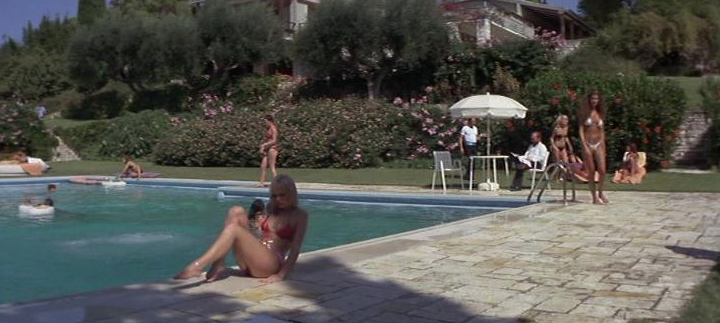
When Bond spies on the assassin Hector Gonzales, he is at a pool surrounded by beautiful women in bikinis. They are set decoration; they make adorable background noises, laughing or screaming as needed, and dive, swim, and frolic. They are entirely interchangeable.
At Q’s lab, we see 3 beautiful women in lab coats. One of them (Sharon) brings coffee to Bond and Q. Since she also takes away empty cups, this appears to be part of her job, engineer or no.
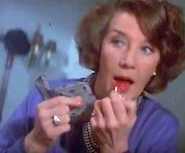 Even Lois Maxwell as Moneypenny is ornamental this time around. She has a “gadget” in her office—a hidden makeup mirror/vanity, so that she can doll up before Bond arrives.
Even Lois Maxwell as Moneypenny is ornamental this time around. She has a “gadget” in her office—a hidden makeup mirror/vanity, so that she can doll up before Bond arrives.
A lot of this schizophrenia can be attributed to director John Glen. The plot and cast were in place before he came on board, and put his stamp on the film. The frivolous way women as a gender are treated is discomfiting, but the major female characters remain an interesting, even compelling, part of For Your Eyes Only.